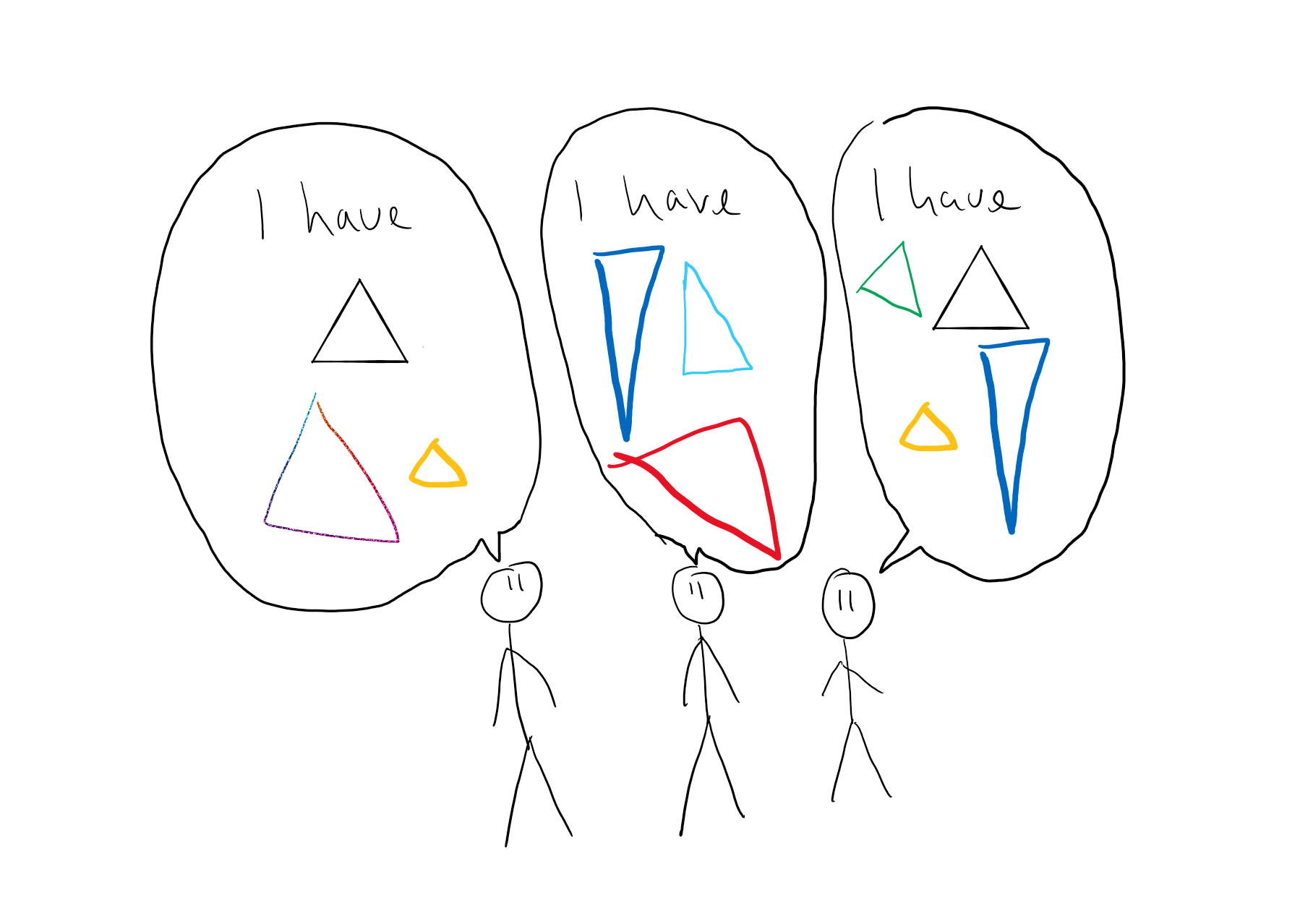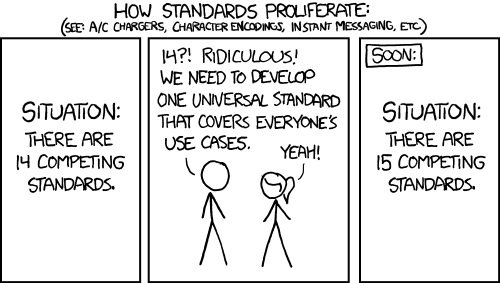What happened to standardization?
Before the 70’s there were only a couple of ways to contact someone, the main two being either physically (post or just turning up at their house) and the landline. In the digital years the options seem to be endless, with major groups being: social networks, communication apps and even the workplace has instant messaging.
One of the common features to the instant messengers, is that they are all incompatible with each other. If I want to talk someone, I first need to figure out where they are as my preferred client can’t talk to theirs.

What this means
This can lead to worse outcomes for consumers as they have to split their attention over a fractured market. Often having to settle on a sub-optimal experience, with various workarounds to achieve their goals.
This is happening in digital streaming market at the moment, multiple companies are moving to create their own streaming platforms. This means that if a consumer needs to sign up and pay for multiple streaming services if they want to access all the content. Meaning that they either have to pay a large sum of money or go without some of the platforms.
Other than the pain of using the different services, most of the time this causes a lock in effect, as all your data is stored within the service. Often this data without the service may become inaccessible or no longer processed for some IoT devices. This is in the companies favour as they can use this to make you continue paying for the service (either with cash or attention).
Having the data stored in one place also leaves your data open to abuse. For example, Facebook has done some pretty dodgy stuff with peoples data. This data can also be sold without your consent.
These barriers to exit make it difficult to leave services you actively dislike, especially with the social media platforms the network effects feed into this making it even harder to leave.
Keep on paying, you can’t leave.
Standard and X
This is summed up by this great XKCD:
Often products just want to add another feature for their unique selling point so create another standard with additional features and support for more use cases. The problem with multiple competing standards is that it leads to choice fatigue for people. At one point I spent some time trying to choose between Signal vs Telegram but couldn’t work out the best so ended up choosing neither. This would also be true if trying to pick a standard to use in my app.
Let’s not forget that often you are trying to create an MVP as fast as possible, so the X that you get is actually delivery speed. Often in this case it can be quicker to design a new protocol from scratch rather than doing the research to what already exists. Also this means that you won’t have to implement any unneeded features.
Standards getting hammered over time
Looking back at some of the standards that came about, it’s easy to gloss over the years where the standards wars happened. The classic case of this is the Betamax vs VCR war. However, this also happened in the internet realm with the browser wars which lead to browsers adding tags that only they supported but the other one didn’t.
It takes time for the companies to come together to form an agreement or for one to beat the other.
Conclusions
Is this actually a problem? I’m not sure but I’m sure I have a worse experience due to different platforms being used. At work it’s Jira comments that I won’t have seen and in the streaming industry that new show.
I’m not sure if this problem will go away. Many of the digitial services are different because the consumer basicly get’s them all for “free” with only the time switching between the platforms becoming a problem.
This is different for the streaming example. I’m not sure how that’s going to turn out but I’m expecting to see a rise in piracy off the back of it.
In other places the progress is slow, but it is happening, with products like USB which is slowly looking like it will be the connector to rule them all.
